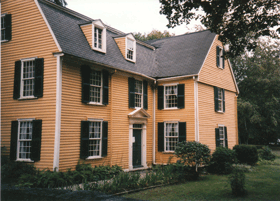The Data
The Salem Witchcraft Website contains sixteen data sets. They provide only a small portion of the historical record about Salem. They do not contain transcripts of examinations or trials or contemporary narrative accounts, for example. Instead, they provide information, primarily of a quantitative nature, about three major aspects of the outbreak: its chronology, its geographic spread, and the social and economic divisions in Salem Village that shaped events. The data were derived primarily from four published sources: Paul Boyer and Stephen Nissenbaum's three-volume transcription of the legal records of the witchcraft trials, The Salem Witchcraft Papers; the new and now authoritative Records of the Salem Witch-Hunt, edited by Bernard Rosenthal, et. al.; Boyer and Nissenbaum's edited collection of documents, Salem-Village Witchcraft; and Salem Village's Book of Record, which contain tax records and other information relating to Salem Village. Photocopies of the original Salem Village record book and church records were examined at the Danvers Archival Center.
Each data set can be saved in text format and opened in Excel or a similar spreadsheet, such as OpenOffice, or in a statistical program. Users can generally click the data set link and choose "save as" text file from the File menu, or right-click the link to open the data set in a new browser window, and then choose "save as" text file from the File menu. The downloaded data set can then be opened or imported as a tab-delineated text file.
Providing instructions to analyze the data proved to be a challenge. Different programs are available, and there are often different versions of each program. Excel for Windows is not identical to Excel for the Mac, and recent versions of Excel for the Mac do not contain the extremely helpful Data Analysis Tookpak found in the 2004 Mac version and in all recent Windows versions. The instructions on this website are written for those having access to Excel with the Data Analysis Toolpak, but users can perform the same or similar analyses using OpenOffice or other programs. For example, bar charts in OpenOffice provide an alternative to the histogram function in the Data Analysis Tookpak. Directions can generally be found by searching the Internet. I assume that in many situations, instructors and users will ignore the directions provided in the website's pages and proceed according to their own needs. The instructions are available for those who wish to use them, either directly or as guides to performing data analysis in other programs.
Instructions are offered in greatest detail when a new technique is introduced. When the technique is applied in later analyses, instructions are abbreviated and a link is provided to a fuller discussion.
It is strongly suggested that users continually work with copies of these data sets and keep the originals intact.
